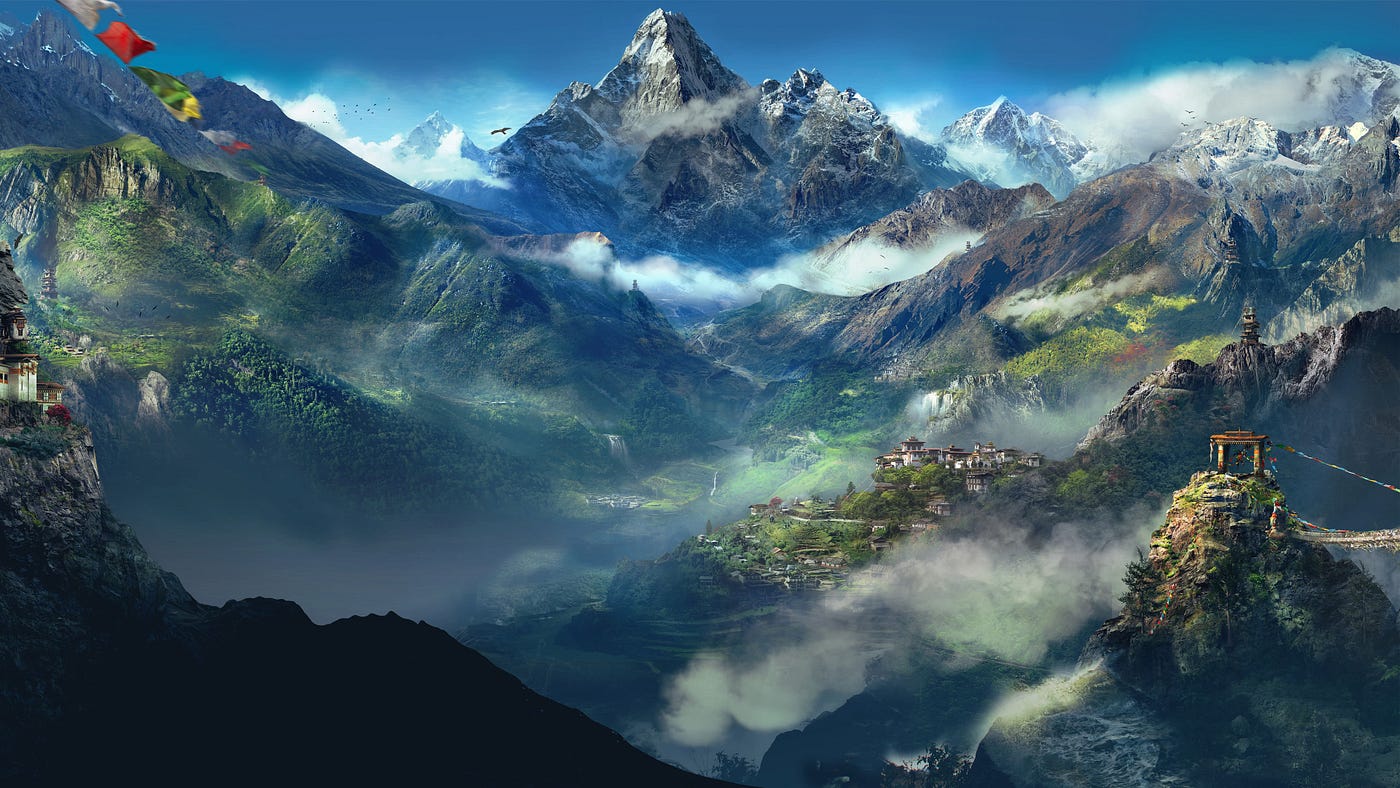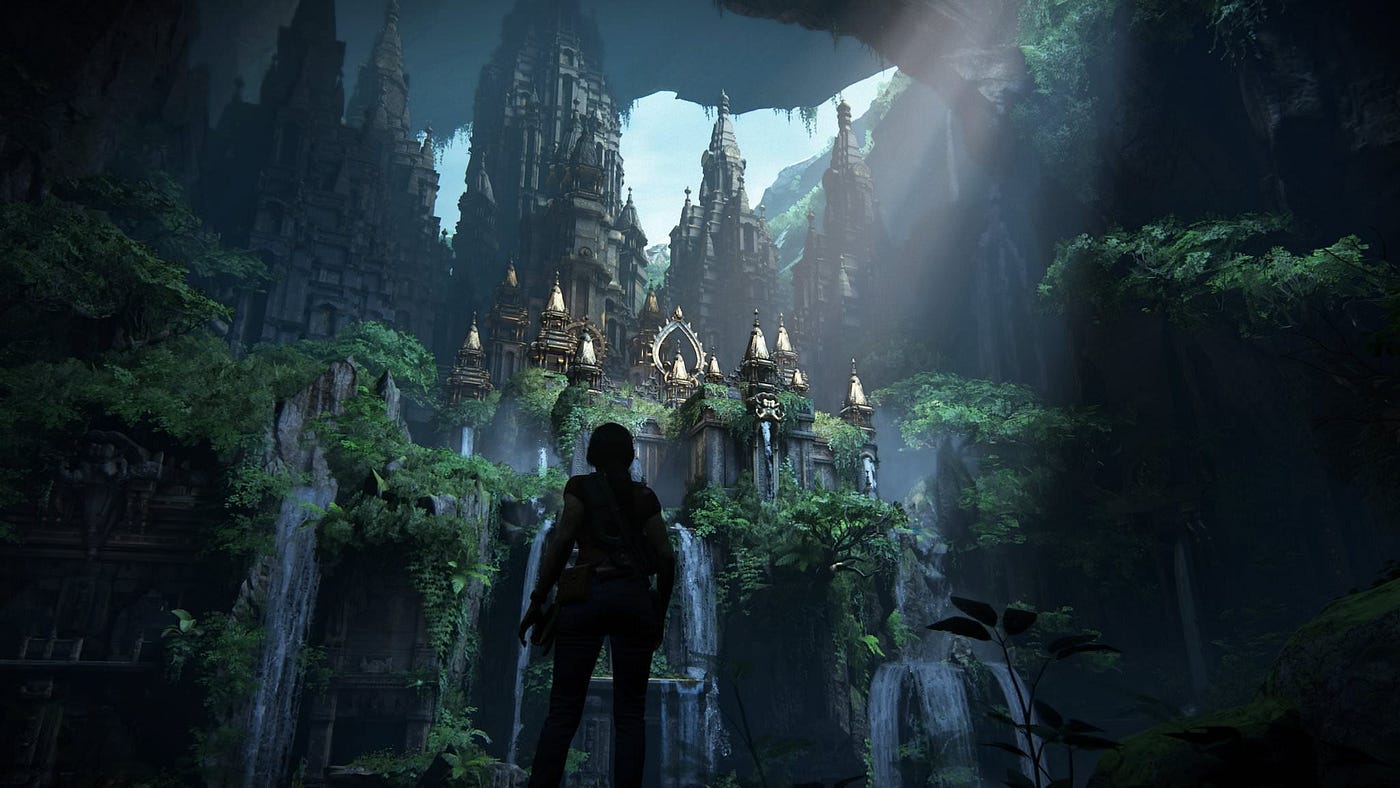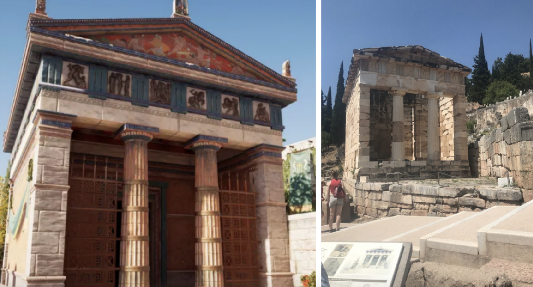Video Games Made Me Travel
Three games that made me want to travel (and the one that got me on the plane)

Traveling makes me anxious. Traveling abroad with a whole bunch of unknowns? Ooh boy, I’m terrified.
Yet I’m constantly itching with that travel bug and I have video games to blame. Yup, you heard me right. Video games.
My two feet will never touch Serkonos’ salt-covered ports in Dishonored 2 or slide down sun-soaked dunes in Journey, but that never stopped me from wishing for it or wishing for more. While there are often no real life comparison to the worlds we explore in games, I’m often looking for something similar to ogle at online. To me that is a testament to the incredible craft of the artists’ who capture these worlds.
“Games are inarguably beautiful” (Stuart, 2013) and have an edge over the incredible sights we see in movies and TV shows. In video games, you can explore and interact with these beautiful worlds.
How many times have we paused in the middle of a mission to take in the view? Or had that swelling in your chest sensation as you witness a stunning sight?
But there are limits to how we can interact with these worlds. We can only interact as much as the programming allows us to and in no way are these worlds, specifically those based on actual real world locations, substitute for the real thing.
So here are beautiful games that made my inner travel bug itch and the one that had me jumping on a plane and out of my comfort zone.
Yup, you read that right. I did it.

Far Cry 4 (2014)
Mountains decorated with prayer flags and towering sculptures of religious icons dashed in blue paint fill the expansive world of Kyrat. The start of the game give us a taste of Kyrat, but it’s when we finally gain control of our protagonist do we witness the thought and love that went into creating a beautiful world reminiscent to Nepal.
Red beams, hanging bells tinkling in the wind, and the haze of incense wafting across our vision is what we get to walk through at the start of this adventure. Everything in the room begs to be admired, despite the sound of gunshots from afar and screaming from down below… Welcome to Kyrat.
Ubisoft’s pushed themselves to create an authentic environment based on Nepal for Far Cry 4. They first started with online images of landmarks and articles of their political history. It became obvious that online sources would never measure up to the real deal. So they traveled to Nepal, sharing snapshots of their journey towards understanding the culture, history, people, and religion in a behind-the-scenes documentary, “Journey to the Himalayas” (2014). Kyrat, this fictional country, becomes a multi-layered world thanks to the information brought back. It feels real. But what really made me want to explore Kyrat beyond its breathtaking views, was Kyrat’s lore.
Throughout the documentary, the recurring message is that the Nepalese have “strong ties to its past” (Ubisoft, 2014). Ubisoft makes note of it in Far Cry 4 environmentally and plot-wise. Temples, ritual bells (ghantas), and colorful thangkas can be interacted with and admired throughout Kyrat. Kyrati citizens are rooted in their religious traditions and that often clashes with the modern world and the change it brings. The further you explore Kyrat, the more complex and rich the world becomes.
If that’s not enough, you can explore Shangri-La. Filled with bright colors, symbolism, and mysticism, you must rid this ethereal realm of demons. It’s a beautiful way of pulling players further into Kyrat’s lore. It’s another reason why it’s hard not to want more of this visually appealing world and the history it brings with it.

Uncharted: The Lost Legacy (2017)
With the success of the Uncharted series, the bar has been set high on creating realistically rendered games.
Uncharted: A Thief’s End was an incredible game, but I’d argue Lost Legacy has a lot to brag about when it comes to transporting us to a colorful world with incredible detail. The story focuses on Chloe Frazier and Nadine Ross, throwing the characters in both urban and rural parts of India.
Already at the start of the game you can walk through a busy market. Watch the dust be kicked near your feet, see the detailed texture of your hands as you hold up your phone to take a picture, listen to people haggle, and watch the way the slowly setting sun changes the colors of the market’s stalls. This is just the beginning.
“Naughty Dog has gone to a lot of trouble recreating a South Indian setting, building in far more detail than its intended Western audience is likely to notice” (Telford, 2019).
While Lost Legacy is not perfect in its recreation and takes certain liberties — like magical realism — to create a compelling story, it stands out from typical Western-made games due to these efforts.
There is a long list of stunning landscapes you visit in-game. Most of the game is exploring forgotten Indian ruins. Most, if not all, give off the impression humans were not meant to walk in these sacred places.
I remember feeling incredibly small and intimidated by the towering statue of Ganesh, the god of beginnings, that stands next to a roaring waterfall. Or the eerie sensation of standing in a water-filled temple where Shiva stands in the middle, wreathed in gold, cooly observing from above.
These incredible locations are not just something to ogle at, it’s something to manipulate (acting as puzzles) to move onto the next stage of the story. Environment Artist Rogelio Olguin (2016) shares how that feature is intentional.
“Our games are story oriented, and because of that we add as much depth as possible when it comes to the macro and micro of our environmental storytelling…
With this memorable style of storytelling and design, it’s led to me doing research on the side each time I’d encounter a deity, tidbit of history, cultural reference, etc. Personally, I think that speaks highly of a game where you want to learn as much as you can of the world being presented.


Assassin’s Creed: Odyssey (2018)
My day job is teaching history and I always begin my World History class discussing Greek and Roman contributions to democracy. So I really wanted to play this adventure that would place me in the middle of it all.
The game lets us explore and interact with Greece in many ways. You can sail across clear, blue waters, explore a volcano where Hephaestus is said to have his workshop, and hike up the massive statue of Athena in Athens. The sights are so unbelievable, it’s easy to think it all fiction. However, each location you come across carries with it historical information provided by Ubisoft.
Yes, it’s real.
It’s no secret that Greece was blessed with master sculptures, but to see these recreations was incredible. Sadly, many of these great pieces no longer exist because of time, conflict, change in religious views, etc. So it’s nice to be given a snapshot of what once was.
The views alone are breathtaking, but it is the story of Alexios and Kassandra that gives meaning to the locations you visit. The characters are thrown into their own saga during the Peloponnesian War and face leftovers of Greek legends throughout. Greek history and myth come together, making this open-world adventure addicting.
I fell in love with the adventure and looked for more. It started with me looking up the islands, if such-and-such sites still exist today, food, and language (apparently the term malakas is pretty overused in-game). Then came the online travel guides… When is the best time to visit… I am deep into this rabbit hole.
I did it — or rather we did it. Roping in an amazing and close friend, we took the plunge and traveled to Greece.
It was fun to visit historical sites and compare it to Ubisoft’s recreation. I was able to visiting the Leonidas Monument in Thermopylae and hear the true story of the 300+ soldiers (yes, there were FAR over 300 soldiers and not just Spartans). I drove and climbed over 1,000 feet to see the monasteries in Meteora. I walked through the Athenian Acropolis, hearing the story of how Poseidon and Athena competed for Athens.
Each location carried with it a unique story that couldn’t find its way in Odyssey.
My favorite has to be that of Delphi, a sanctuary dedicated to Apollo (photos above for reference). Tour guides shared that the priestess would get high off of the fumes from fissures in the basement of the temples before emerging out to share their “prophecies.”
No, you cannot get high from it today. It’s all gone. Trust me, we asked.
While the trip made me appreciate Odyssey, I realized that Odyssey scratched only the surface.
The food (which deserves an entire article on its own). The people. The sights. The heat. The history. Being able to experience and interact with it firsthand made me realize that no digital recreation can compete for the real thing.
Video games of real-life places is like hearing a story from a friend. Visiting the actual place is seeing the story unfold before you. That’s where it becomes your story. It’s sincere, deep, and multi-layered. I’m so happy Odyssey gave me that nudge because I left with a wealth of knowledge and appreciation for Greece.
Did I learn everything there is to learn? No way. There is so much I’ve yet to explore and I cannot wait to go back! I have Odyssey to thank for starting me on this adventure.
So even though traveling is not in the cards, at the moment, I’m looking forward to my next opportunity to explore a world beyond the confines of a disc. Until then, I’m going to go visit Athens…in 431 BC.
Comments
Sign in or become a SUPERJUMP member to join the conversation.
